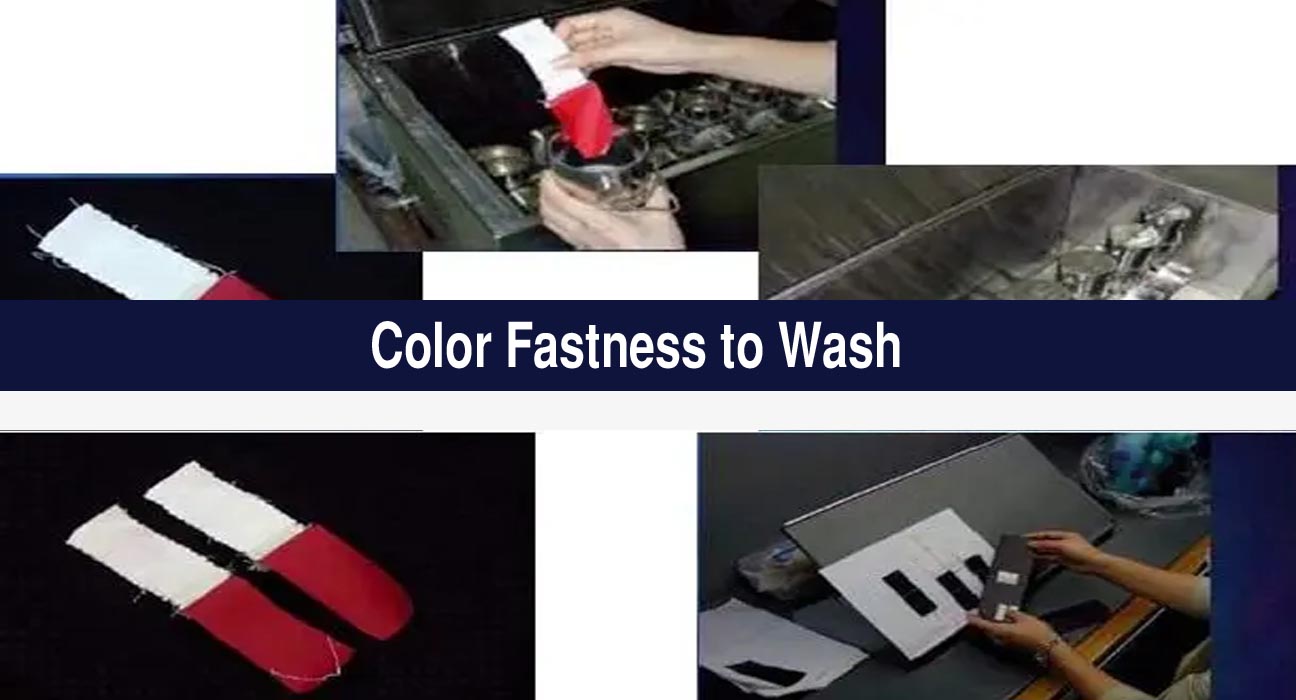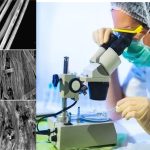What is Color fastness to wash?
Color fastness to wash or Wash Fastness is the resistance of a material to change in any of its color characteristics as a result of washing with household detergent. Colorfastness to washing is very important for Lab-dip in dyeing factories. It is one of the most important and mostly used colorfastness tests.
Read: ICI Pilling Box Tester
Name of the Experiments: Determination of color fastness to washing using a Grayscale.
Objective:
To learn about color fastness to washing.
To learn about the process to test color fastness to washing.
Theory:
Color fastness to washing means, A specimen of the textile, in contact with one or two specified adjacent fabrics, is mechanically agitated under described conditions of time and temperature in a soap solution, then rinsed and dried. The change in color of the specimen and the staining of the adjacent fabric are assessed with the grey scales.
Color fastness to wash
Apparatus:
- Beaker.
- Measuring Cylinder.
- Pipette.
- Pot.
- Digital Balance.
- Scissor.
- Gray scale for color change.
- Gray scale for color fading.
- Light Box.
- Dryer.
- Multi fiber fabric.
Recipe of Washing
| SL | Process Parameter | Unit | Dossing | Stock Solution |
| 01 | Detergent | g/L | 4 | 1% |
| 02 | Sodium Perborate | g/L | 1 | 1% |
| 03 | M:L | —— | 1:50 | —— |
| 04 | Temperature | °C | 40 | —— |
| 05 | Time | min | 30 | ——- |
Process Flow Chart:
Sample & Multi-fibre conditioned as lab standard (20±2)°C temperature and relative humidity (65±2).
↓
Take multi-fibre & sample of 10X4 cm2.
↓
Sewing both multi-fibre and test specimen together.
↓
Wash sewed specimen as per recipe.
↓
Final assessment with both types of gray scale.
Working Principle
At first, we need to collect a conditioned dyed sample and multi-fiber of 10X4 cm2 and stitch them together. Then we need to set bath and take chemicals as per recipe. Then we immersed sample to the bath and heated it up to 40°C for 30 minutes. After the process, it need to dry the sample and compare with grayscale to color change for dyed sample and compare with grayscale to color staining for multi-fiber.





